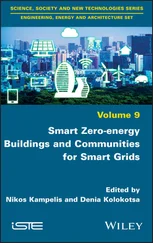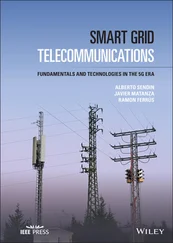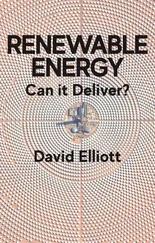6 Chapter 6Figure 6.1 Smart grid with its enablers.Figure 6.2 Importance of energy storage system.Figure 6.3 Functions of energy storage system.Figure 6.4 Energy storage technologies classifications.Figure 6.5 Pumped hydro energy storage system schematic.Figure 6.6 Compressed air storage diagram.Figure 6.7 Detailed view of flywheel storage system.Figure 6.8 Superconducting magnet energy storage system schematic diagram.Figure 6.9 Battery storage system and detailed structure.Figure 6.10 Super capacitor energy storage system.Figure 6.11 Fuel cell schematic diagram.Figure 6.12 Thermal storage system schematic.Figure 6.13 Technical maturity of energy storage technologies.Figure 6.14 Power and energy densities of different energy storage technologies.Figure 6.15 Capital cost–based comparison.Figure 6.16 Detailed comparisons along with specific applications.Figure 6.17 Applications of energy storage systems.Figure 6.18 Power conditioning of energy storage system.
7 Chapter 7Figure 7.1 Block diagram of the proposed system.Figure 7.2 Monthly irradiation in Coimbatore.Figure 7.3 I-V and P-V curve of a solar PV panel.Figure 7.4 Wind speed at Coimbatore.Figure 7.5 Speed vs. torque and speed vs. power curve of PMDC generator.Figure 7.6 Multi-mode power converter topology.Figure 7.7 MMPC buck mode when switch S 1is ON.Figure 7.8 MMPC buck mode when switch S 1is OFF.Figure 7.9 MMPC boost mode when switch S 4is ON.Figure 7.10 MMPC boost mode when switch S 4is OFF.Figure 7.11 MMPC in inverter mode when switches S 1and S 4are ON and the remaini...Figure 7.12 MMPC in inverter mode when switches S 5, S 3, and S 2are ON or inverte...Figure 7.13 MMPC in rectifier mode during D 1, D 4, and S 5in conduction for posit...Figure 7.14 MMPC in rectifier mode during D 2and D 3in conduction for negative h...Figure 7.15 FPGA QALU architecture for digital MS-PWM control implementation.Figure 7.16 FPGA-based mode selection for MMPC.Figure 7.17 Flowchart of MSPO-MPPT algorithm.Figure 7.18 Graphical view of SPWM generation.Figure 7.19 Buck mode with duty cycle of 25%.Figure 7.20 Buck mode with duty cycle of 50%.Figure 7.21 Buck mode with duty cycle of 75%.Figure 7.22 Boost mode with duty cycle of 75% and 25%.Figure 7.23 Boost mode with duty cycles of 50% and 25%.Figure 7.24 Boost mode with duty cycles of 87.5% and 25%.Figure 7.25 Boost mode with duty cycles of 81% and 19%.Figure 7.26 Inverter mode with modulation index = 1.Figure 7.27 Inverter mode with modulation index = 0.9.
8 Chapter 8Figure 8.1 Block schematic of the system.Figure 8.2 Power circuit of the system.Figure 8.3 Experimentally obtained I-V and P-V characteristics of the PV array.Figure 8.4 Block diagram of the DC link voltage controller.Figure 8.5 Switching technique for SPWM-based VSI controller.Figure 8.4 Response of the system when the irradiation is at 1,000 W/m 2; voltage...Figure 8.5 Voltage and current at the output of the inverter terminal, when irra...Figure 8.6 Experimentally obtained dynamic response of the solar PV system when ...Figure 8.7 Experimentally obtained dynamic response of the projected system when...Figure 8.8 Photograph of the experimental setup.
9 Chapter 9Figure 9.1 Cumulative installed capacity of wind.Figure 9.2 Direct grid connected configuration of three-phase WDIG feeding singl...Figure 9.3 Stator winding configurations for three-phase induction generator sup...Figure 9.4 Overall setup of the three-phase wind generator system feeding power ...Figure 9.5 Step-by-step procedure for the performance evaluation of wind energy ...Figure 9.6 Wind turbine output power curve for various wind velocities.Figure 9.7 Modified equivalent circuit of SEIG.Figure 9.8 UR-LCI configuration.Figure 9.9 UR-(DC-DC)-LCI configuration.Figure 9.10 Closed-loop operation of WDIG-DC/DC–LCI configuration.Figure 9.11 UR-VSI configuration.Figure 9.12 Closed-loop operation of UR-VSI configuration.
10 Chapter 10Figure 10.1 Blinding of relays.Figure 10.2 Variations in fault current level.Figure 10.3 False/unnecessary tripping of relays.Figure 10.4 Loss of mains.Figure 10.5 Basic block diagram of distance protection.Figure 10.6 Test system without distributed generator.Figure 10.7 Test system with distributed generator.Figure 10.8 Test system for ITC.Figure 10.9 Basic block diagram of differential protection.Figure 10.10 Ways of islanding formation.Figure 10.11 Typical microgrid.Figure 10.12 Health hazardous to maintenance personnel.Figure 10.13 Unsynchronized reclosing.Figure 10.14 Different types of UIIM.Figure 10.15 Basic flowchart of the passive method.Figure 10.16 Basic flowchart of the active method.Figure 10.17 Basic flowchart of the hybrid method.
11 Chapter 11Figure 11.1 A simple microgrid platform.Figure 11.2 Load categorization on microgrids.Figure 11.3 (a) Global energy scenario transformation. (b) Renewable energy cons...Figure 11.4 Hybrid AC/DC microgrid configuration.Figure 11.5 Architecture of microgrid communication infrastructure.Figure 11.6 RET deployment barriers.
12 Chapter 12Figure 12.1 Layout of typical PV-grid integrated power system [10].Figure 12.2 Overview of wind energy grid integration system [10].Figure 12.3 Configuration of virtual synchronous machine [10].Figure 12.4 Frequency control techniques in renewable energy grid integration po...Figure 12.5 Classification of energy storages used in renewable energy power sys...
13 Chapter 13Figure 13.1 Schematic of a DC microgrid.Figure 13.2 Schematic of AC microgrid with multiple distributed energy system.Figure 13.3 Schematic of hybrid AC-DC microgrid with multiple distributed energy...Figure 13.4 Schematic of centralized control of AC microgrid [61].Figure 13.5 Hierarchical control of AC microgrid [63].Figure 13.6 Local control loops in a typical voltage-controlled VSC-based DG [71...
14 Chapter 14Figure 14.1 Distribution of power quality issues against time.Figure 14.2 Flow diagram of power quality issues.Figure 14.3 Sources of power quality issues.Figure 14.4 Facilities affected by power quality.Figure 14.5 Condition of power voltage in computer devices.Figure 14.6 Sources of renewable energy in electricity.Figure 14.7 Mitigation of power quality issues using UPQC.Figure 14.8 Mitigation of power quality issues using D-STATCOM.Figure 14.9 Mitigation of power quality issues using UPS.Figure 14.10 Economic impact vs. duration of power supply.
15 Chapter 15Figure 15.1 Interconnection of power, IT, and communication technologies in smar...Figure 15.2 Smart meters.Figure 15.3 DCU.Figure 15.4 Interface of MDM with different devices/applications.Figure 15.5 AMI interface.Figure 15.6 Peak load management.Figure 15.7 Substation automation network.Figure 15.8 Ship board electrical grid.
1 Chapter 3 Table 3.1 Installed generation capacity (in MW) of power stations in India. Table 3.2 Generation and growth in conventional generation in India from 2009–20...Table 3.3 Energy savings through peak load management.Table 3.4 Details of DTMS installed in Puducherry SG pilot project.Table 3.5 Details of faults detected by FPI during July to November 2014.Table 3.6 Details and actions taken for tampering.Table 3.7 Demographic data of the respondents.Table 3.8 House details of the respondents.Table 3.9 Concerns and interest of the respondents.Table 3.10 Awareness and attitude of the respondents toward rooftop solar PV.
2 Chapter 4Table 4.1 Types of smart grid network attacks.Table 4.2 Load capacity.Table 4.3 Load types.Table 4.4 Load analysis.
3 Chapter 5Table 5.1 Comparing conventional grid with the smart-grid.
4 Chapter 7Table 7.1 Predetermined lookup data for SPWM.
5 Chapter 10Table 10.1 Various signal features and the types of disturbance.Table 10.2 Pros of pros and cons of literature papers.Table 10.3 Comparison of various existing protection schemes for microgrids.Table 10.4 Various standards for ceasing operation of DGs on islandTable 10.5 Comparison of various unplanned islanding identification methods [37–...
Читать дальше












